In the Red Centre you’ll discover the heart of Aboriginal culture more than 60,000 years in the making. Here in Central Australia, art, culture and tradition thrive in the arid desert landscape surrounding Alice Springs and Uluru.
In Alice Springs and Uluru you’ll find Aboriginal-led tours, cultural experiences, art galleries, national parks and conservation reserves with deep connections to country and traditional customs.
Here’s our guide to 10 of the best Aboriginal cultural experiences in the Red Centre.
Learn about harvesting bush foods at Karrke
Join a guided tour at Karrke Aboriginal Cultural Experience tucked away in the foothills of Watarrka National Park (Kings Canyon). You’ll get a hands-on experience of how bush foods and medicines are collected by Southern Arrernte people in Central Australia’s arid desert. Karrke takes its name from the Arrernte language word for bowerbird, a bird which is known for collecting brightly coloured objects to decorate their nests.
You’ll learn how bush medicines and foods thrive and are harvested throughout the seasons. Colourful seeds and nuts are used for jewellery making, plus there’s displays of spears, boomerangs and other tools crafted from hardwoods.
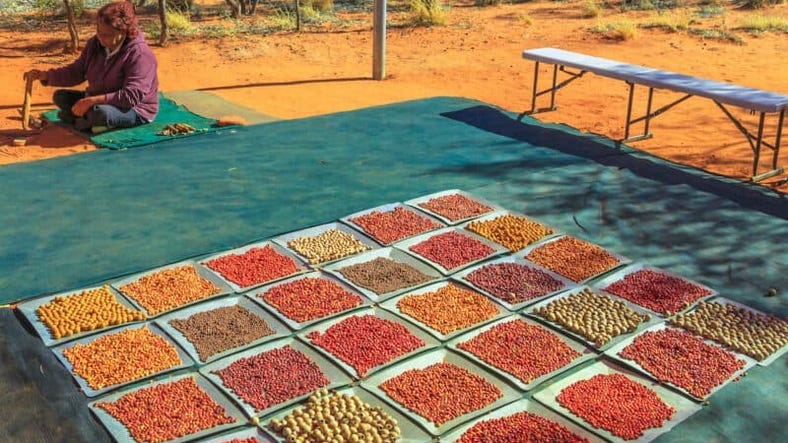
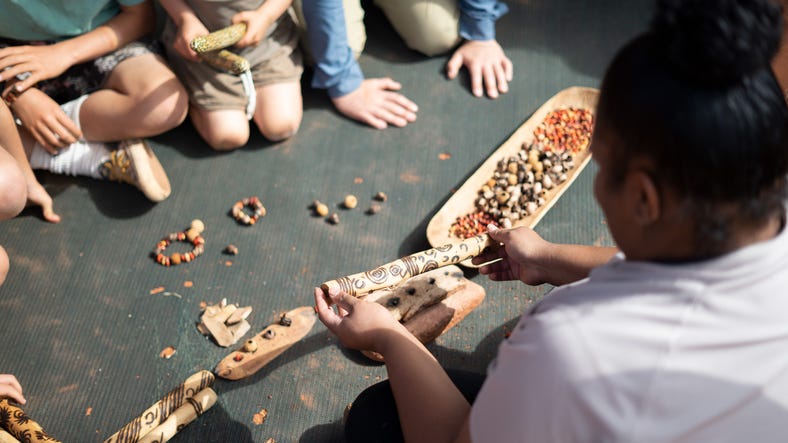
Historic Ntaria (Hermannsburg)
From Alice Springs it’s an easy one-hour drive to Ntaria (Hermannsburg). The town was home to famed Arrernte artist Albert Namatjira, whose paintings were inspired by the spectacular Central Australian landscape.
Hermannsburg Historic Precinct is a Heritage-listed site and includes the restored remains of the Hermannsburg Mission. The precinct is owned by the Western Arranta people and shares the stories and historical records of the former Lutheran Mission. The mission provided sanctuary and medical assistance for Arrenta people from as early as the late 1800s.
Make your own art with Aboriginal Artists in the Red Centre
At Uluru join the SEIT Aboriginal Art Experience a fascinating insight into the desert landscape, local wildlife and culture. You’ll visit Walkatjara Art and hear about the deep cultural history of the Anangu, the local Aboriginal people who have been the custodians of this land for thousands of years.
Over a couple of hours, you’ll learn about art and connect with Aboriginal culture. This hands-on experience allows you to develop a deeper appreciation for the tradition as you create your own meaningful Aboriginal dot painting to take home.
After your tour be sure to visit the Gallery of Central Australia, located adjacent to Desert Gardens Hotel, where you can expand your knowledge of Indigenous art and be inspired through revolving exhibitions, enriching discussions, and art from the Central Australian Desert Region.
In Alice Springs sit down with Aboriginal artists - Marie Ryder and Kevin Bird for an Aboriginal Art Workshop. Embark on a journey of discovery, intertwined with the artists own personal stories and their connection to the Central Australian country. Over 90 minutes view demonstrations and create your own art.
Walk amongst the dramatic rockfaces of Standley Chasm
Take a guided tour with a Traditional Owner through the white gums that line the creek bed to Standley Chasm Angkerle Atwatye. Wandering the walking trail with a guide you’ll hear stories about the chasm’s cultural significance which is sacred to women’s dreaming of the Arrernte people. Guides share insights about bush foods and native plants and animals which inhabit the picturesque chasm.
Time your visit at midday for the best photo opportunities, when shards of sunlight light up the vertical cliffs in glowing shades of orange. Returning to the visitor centre, enjoy lunch at the café, pick up a souvenir from the gift shop or sign up for a Cultural Experience and Art Workshop. You’ll experience a heartfelt Welcome to Country, learn about traditional customs before creating your own unique artwork to take home.
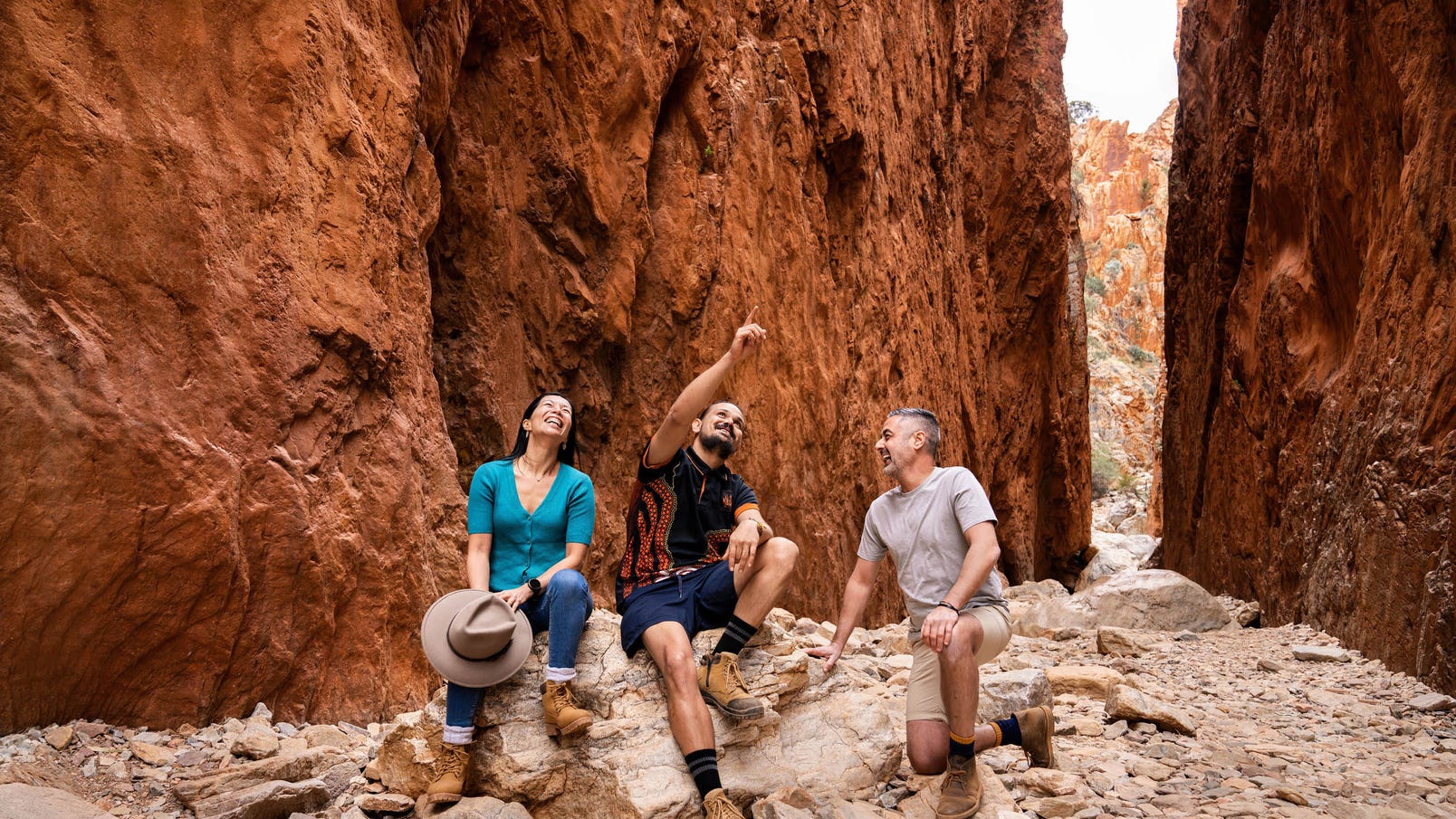
View petroglyphs at Napwerte/Ewaninga Rock Carvings Conservation Reserve
Just a half hour drive from Alice Springs Airport are a collection of petroglyphs and rock engravings within Napwerte/Ewaninga Rock Carvings Conservation Reserve. A short walking trail loops around rock art sites where hundreds of symbols and motifs are carved into sandstone. The exact age of these petroglyphs is unknown but it’s thought that Arrernte people would spend extended periods of time here, carving stories and beliefs into soft sandstone surrounding the waterhole.
The site is a natural clay pan which traps water and rain runoff, making it traditionally a reliable source of food and water for the Arrernte people who would hunt animals lured by water and lush vegetation. It’s thought that these extended periods of hunting and gathering provided opportunity and time to document these stories etched into rock that we see today.
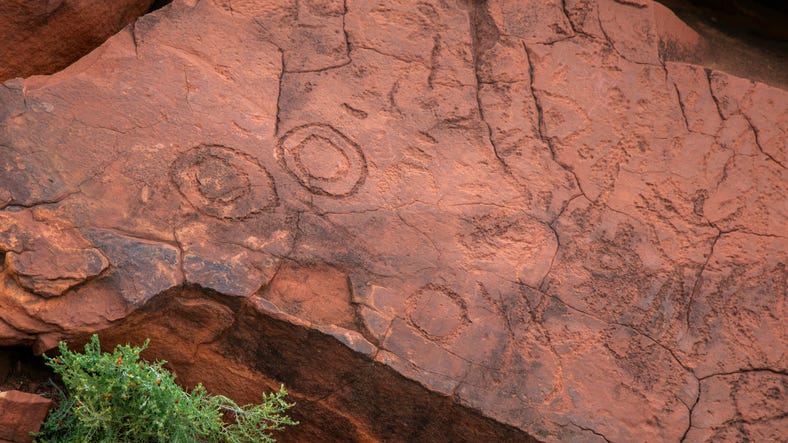

Connect to Country with Traditional Owners
Accompany the Traditional Uluru Family to their homelands and spend time learning about the oldest living culture in the world with SEIT Patji – A True Aboriginal Experience. This unique and exclusive touring experience is located just outside of Uluṟu-Kata Tjuṯa National Park south of Uluru. Explore the landscape by 4WD with your guide, learning about its rich history as you take in the extraordinary scenery.
See rock art at Yeperenye / Emily and Jessie Gaps Nature Park
Yeperenye / Emily and Jessie Gaps Nature Park in the East McDonnell Ranges is a short drive from Alice Springs. Both are significant cultural sites to Eastern Arrernte people for the Song Line which winds its way through central Australia. Yeperenye is the Arrernte word for caterpillar which references the Dreamtime story related to the McDonnell Ranges.
An 8.3km long ‘dreaming trail’ links the 2 gaps and is suitable for walkers or cyclists and is wheelchair accessible for the first 500m from Emily Gap carpark. Look out for desert flowers, long-nosed dragons, whistling kites, brown falcons or honeyeaters. Emily Gap is a registered sacred site and has a large painting depicting the caterpillar dreaming.
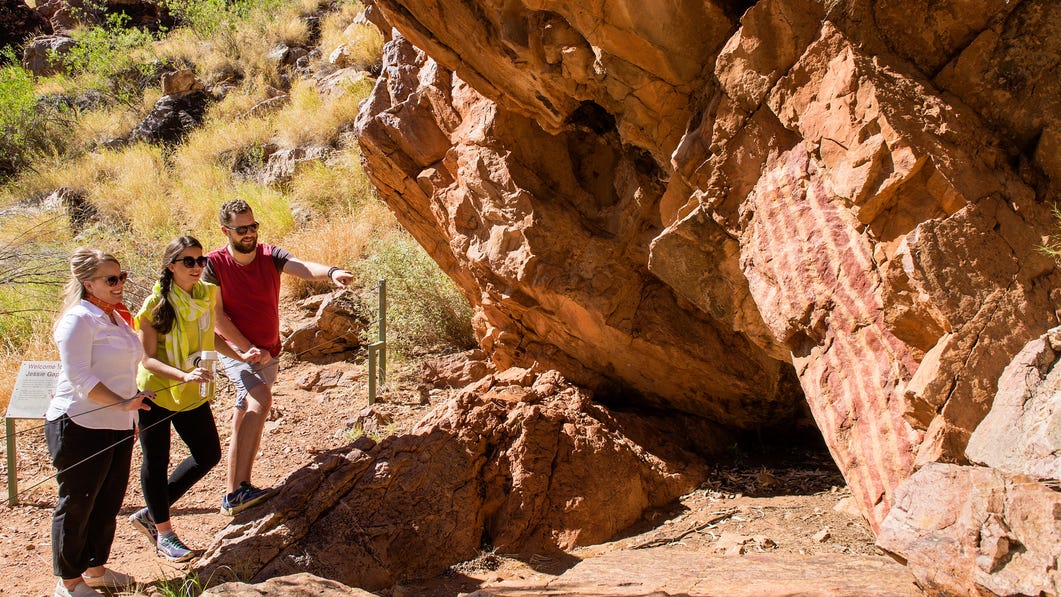
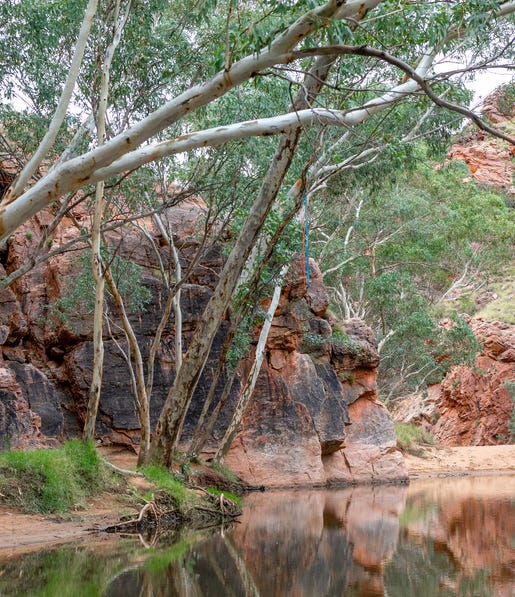
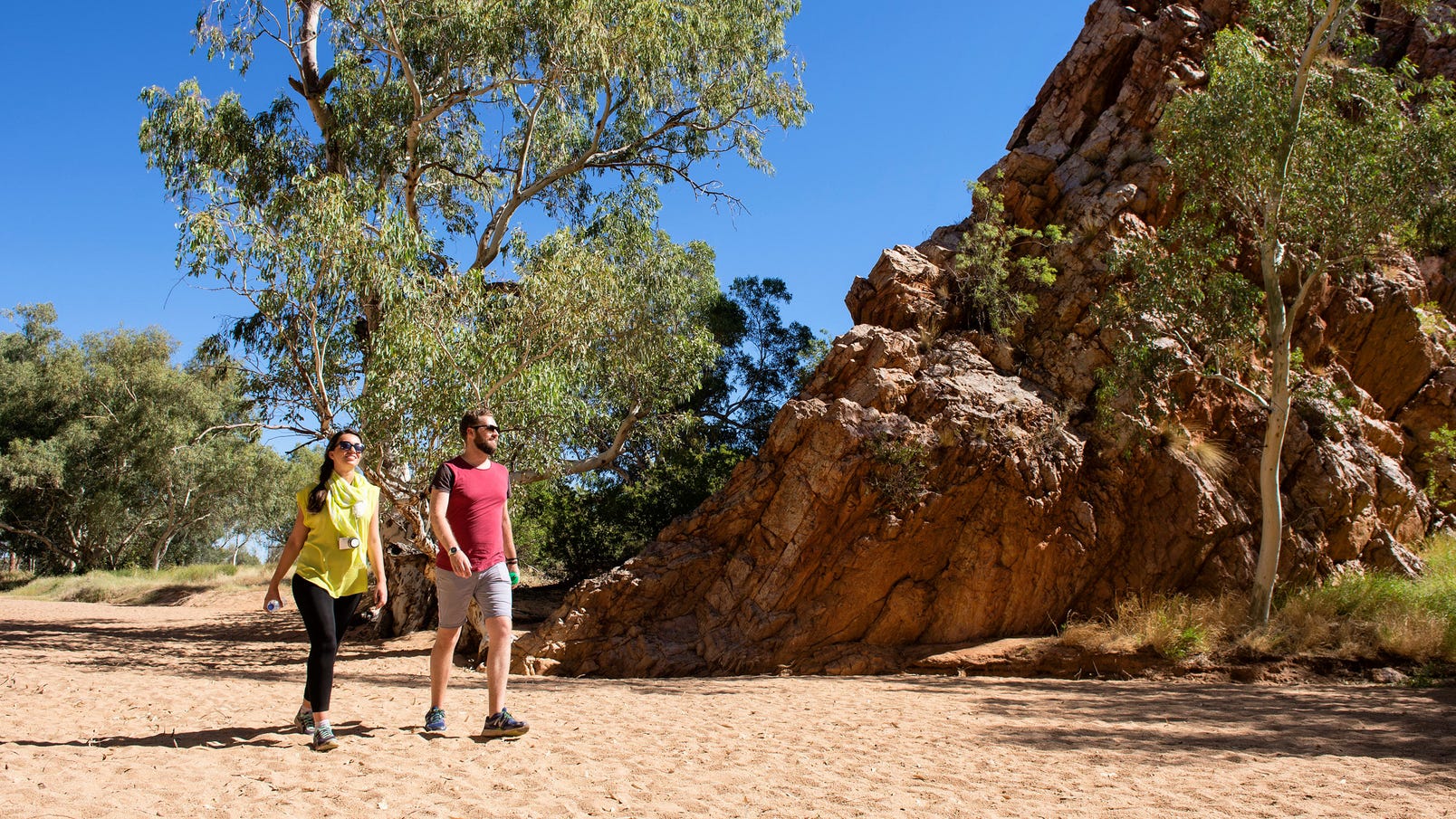
Visit the colourful Ochre Pits
At the Ochre Pits you’ll see where the raw materials for painting and body art are collected from. This is nature at its finest – the Red Centre version of an art supply store you’d find in the city. The Ochre Pits, which are close to Ormiston Gorge, are a colourful outcrop of cliffs lining the banks of a creek. The site has been used by Arrernte people for thousands of years, who collect ochre to tell creation stories through painting and ceremonies.
The Ochre Pits are associated with stories and ceremonies specific to Western Arrernte men and women and children are traditionally not permitted to collect ochre here. The colour cliffs are lined with ochre in different shades of yellow, red and white, melded over millions of years to create a rainbow-like affect.
Visitors are asked to not touch or remove ochre from the site.

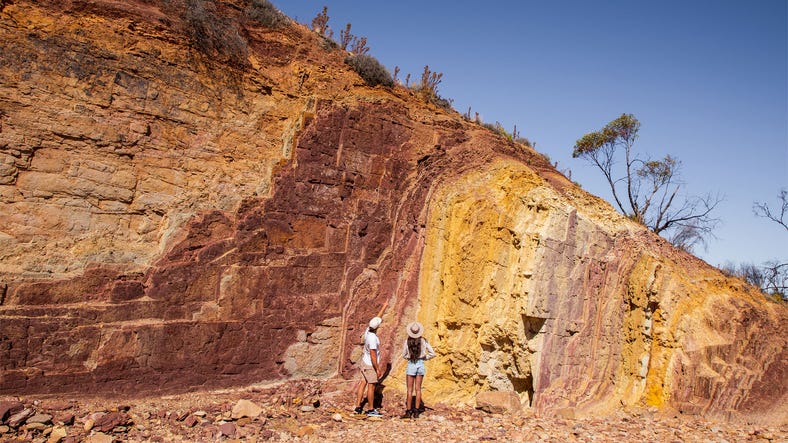
See Uluru through the eyes of Traditional Owners
Join a small-group tour with SEIT Tours to hear stories of Uluru from guides who have grown up with Uluru in their backyard. Patji is the name of their homelands, which are located just outside of Uluru-Kata Tjuta National Park.
As you journey through this extraordinary country, with Uluru an ever-present feature of the landscape, you’ll hear personal stories of Uluru and connections with country long before tourism arrived in the Red Centre. The highlight of the tour comes towards the end of a rewarding day on country when you’ll gather on a sand dune for views of Uluru and Kata Tjuta. Late afternoon is a magical time as the light changes from golden and the sky is tinted shades of pastel pink.
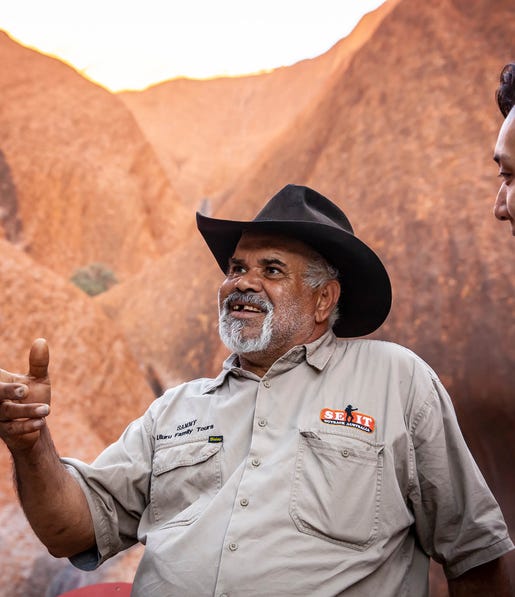

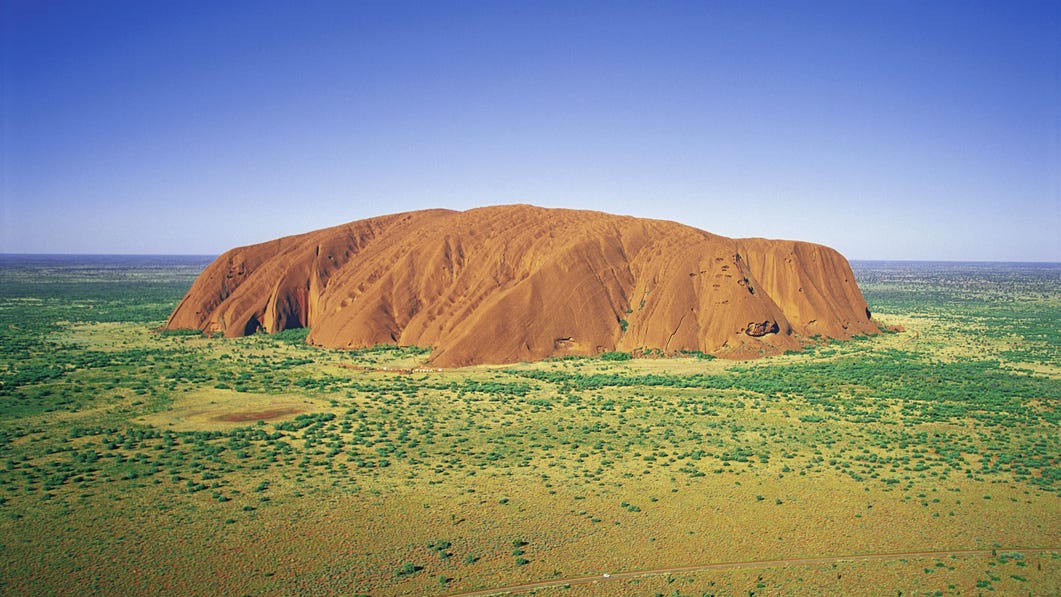
See Uluru’s remarkable rock art
Uluru’s towering facade of red rock is well known. What’s less known is the extraordinary number of rock art sites concealed within its flanks. Approximately 80 rock art sites highlight Anangu cultural knowledge and Tjukurpa stories which have been passed down through generations.
Anangu people traditionally made paints from natural materials, pigments and ash from fires, making them extremely delicate and easily damaged. It’s for this reason that a limited number of sites are open to the public. The best way to see Uluru’s rock art is on a guided tour of the Mala Walk to Kantju Gorge or the Kuniya Walk to Mutitjulu Waterhole where boardwalks and viewing platforms offer the best views. Sites along the Kuniya walk are significant in creation stories of the deadly battle between Kuniya (the woma python woman) and Liru (the poisonous brown snake man).
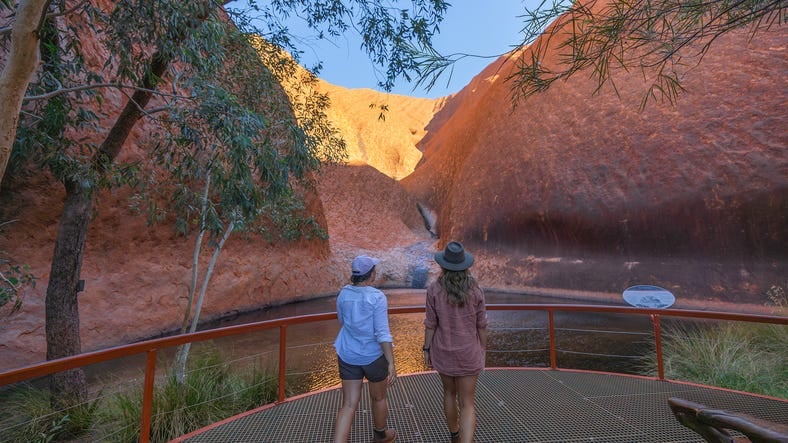
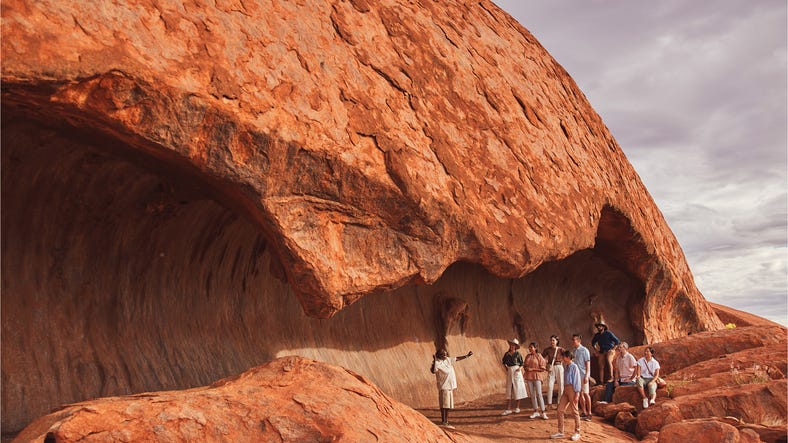
Keep exploring
More articles you might like





